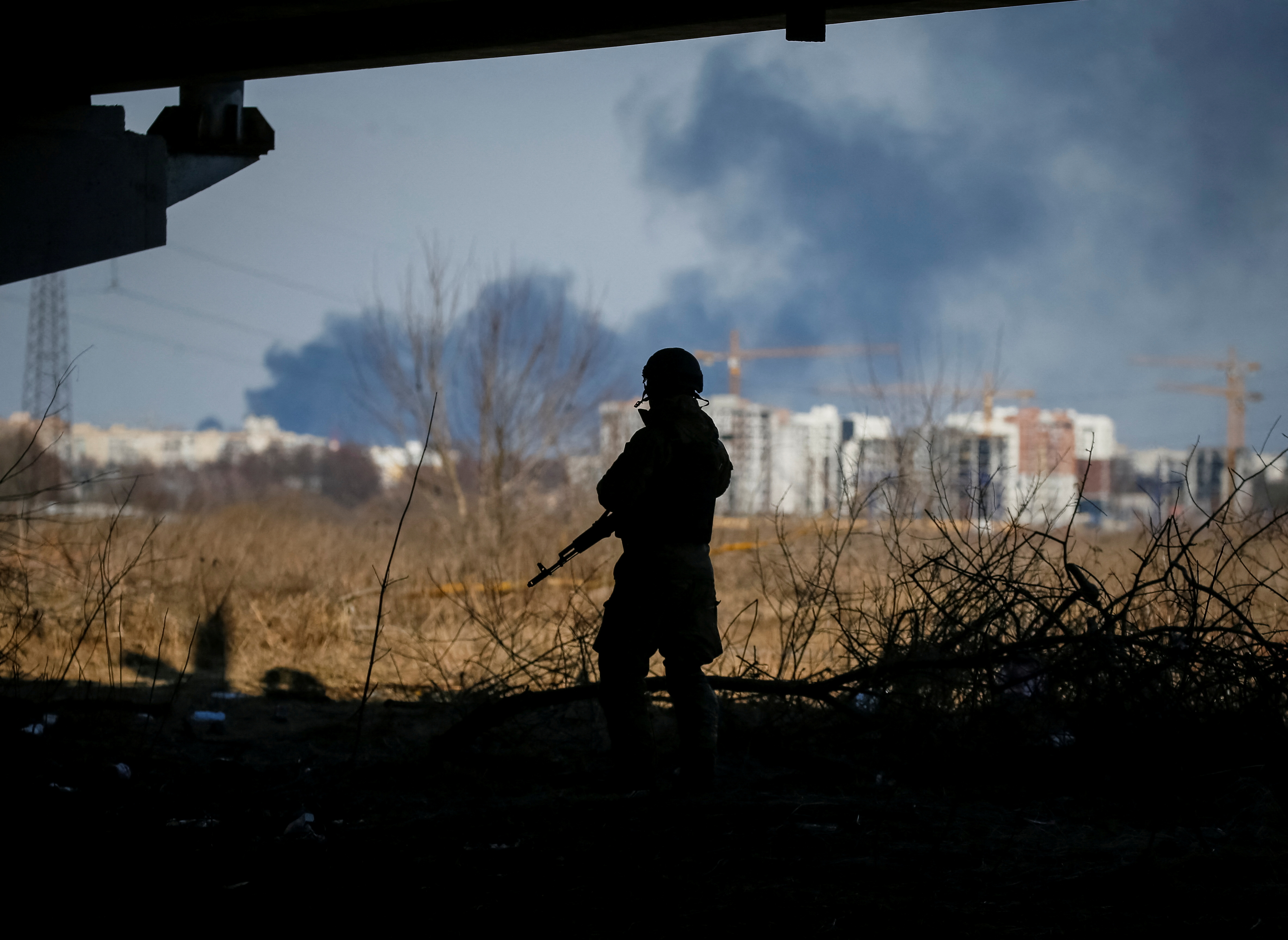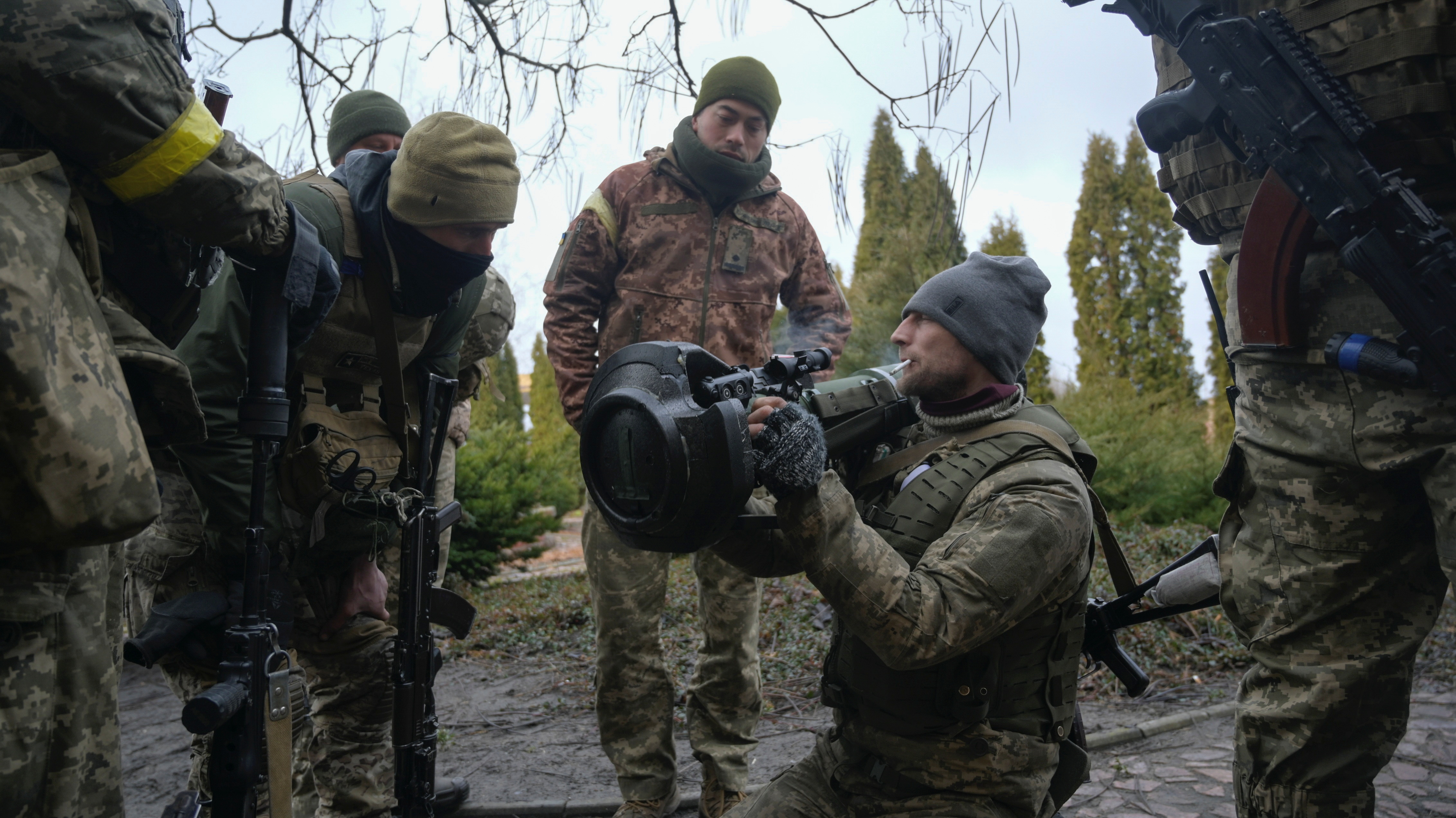The Military Situation in Ukraine after Three Weeks of War
On 16 March, the third week of the war in Ukraine ended. Russian troops still have not broken through the main lines of the Ukrainian defences and captured Kyiv. For the Ukrainians to continue their staunch defence, supplies from Western countries in the form of weapons and humanitarian and economic aid are crucial.
 GLEB GARANICH/Reuters/Forum
GLEB GARANICH/Reuters/Forum
What has happened in the last three weeks?
Since the start of its attack on Ukraine, Russia has been conducting offensive actions in four directions. Launched from Russia in the north—and partly from Belarusian territory—and northwest, its forces aim to encircle Kyiv. The capital is defended by the Ukrainian land forces, airborne troops, and territorial defence units. In the east, the main fighting is taking place near Kharkiv and the city is regularly shelled by the Russians. In the southeast, the Russian armed forces, supported by the militias of the Donbas separatists, have almost managed to cut Ukraine off from the Azov Sea. The last city still standing is Mariupol, but the Ukrainian armed forces are unable to come with reinforcements. The Russians are also conducting operations aimed at capturing Zaporizhzhia (the city is under attack) and moving towards Kryvyi Rih. On the night of 16 March, Russian warships fired on areas around Odesa with mass bombardment for the first time. Civilian infrastructure, including hospitals, schools, and monuments, is regularly shelled. Moreover, Russian troops are using the two captured nuclear power plant complexes–Zaporizhzhia (active) and Chernobyl (closed but potentially still dangerous) as cover for forward operating bases. Russia on 13 March fired cruise missiles on the Yavoriv military training ground near Lviv, only about a dozen kilometres from the border with Poland. However, the Ukrainians’ main defence lines have not broken anywhere, and the Ukrainian General Staff regularly reports significant Russian losses. According to the morning announcement of 16 March, these include 13,800 military personnel, 84 aircraft, 108 helicopters, 430 tanks, 190 artillery systems, 70 multiple launch rocket systems, and 11 unmanned aerial vehicles.
How effective is Kremlin propaganda in Russia?
The goal of the Kremlin’s propaganda is to consolidate Russian society and convince it of the righteousness of its military actions in Ukraine. It focuses on portraying Russian soldiers as heroes and deprecating the Ukrainian state. Ukraine is presented as a country that has been ruled since 2014 by nationalists and “Nazis”, financially and militarily supported by Western countries. Russian media also highlight the supposed existence of biolaboratories in Ukraine where research on biological weapons was carried out for U.S. funding. In addition, they emphasise that before the war started, Ukraine had the ability to build a nuclear bomb, and the work on weapons of massive destruction was aimed at Russia. It constantly emphasises that the Ukrainian Armed Forces were attacking the so-called “People’s Republics” (DNR, LNR) and that Russia had to stand up for them. The Russian narrative is dominated by reports about criminal actions of the Ukrainian military, claiming it destroys civilian facilities and treats residents as hostages, preventing them from evacuation. Media (all now subsumed to the state) in Russia also portray Russian and separatist authorities helping refugees from Ukraine. Russia is also creating fakes about the alleged capitulation of Ukrainian authorities, including local leaders, and a lack of willingness to fight by the Ukrainian forces and local people. So far, that propaganda has been successful in Russia, as evidenced by the still small scale of the anti-war protests in Russia and surveys finding increasing support for Vladimir Putin (also evident in independent surveys).
What might the Russians do next?
The course of action will depend on the political decisions taken in Moscow and Kyiv and the possibility that both countries will call in additional reserves. Still, apart from vague demands such as the demilitarisation, “denazification”, and neutral status of Ukraine, the Russian limits of compromise are unclear, so it is difficult to say to what extent Russia is determined to achieve its declared political goals. However, in order to gain both a military and psychological advantage, it may opt for wider use of cluster munitions and thermobaric weapons. There is also a growing risk that Russia may use chemical or biological weapons, and then blame the Ukrainian side. Such an act probably would, on the one hand, affect the morale and determination of Ukrainians to continue fighting, and on the other, serve Russia as falsified justification for the invasion in its propaganda and the international arena.
What is the humanitarian situation?
Because of the ongoing military operations, especially in areas where fighting is intense, the humanitarian situation has significantly deteriorated. According to UN data from 15 March, at least 691 people have been killed and 1,143 injured (data incomplete). More than 3 million people have left Ukraine, of which around 2 million crossed the border with Poland. About 2 million people are recognised by the UN as internally displaced persons. There are still problems with maintaining humanitarian corridors enabling the evacuation of residents and providing provisions for people who want to stay in their homes. The situation of the inhabitants of Mariupol is still especially bad. After days of waiting, on 15 March, 20,000 people were able to evacuate the besieged city, but the Ukrainian column with humanitarian aid for the city is still blocked by the Russians. President Volodymyr Zelensky said on 16 March that almost 30,000 people were evacuated from the Sumy, Kharkiv, and Donetsk oblasts in recent days.
What should be the further policy of Western countries?
Russia is still trying to deter NATO from becoming more involved in supporting Ukraine, suggesting the Alliance could become entangled in a conflict that could potentially quickly escalate to the nuclear level. By attacking the base in Yavoriv, Russia signalled that it would actively counter arms and humanitarian aid supplies from Western countries. However, the West should consistently implement its sanctions policy against Russia and support the Ukrainian state. For Ukraine, additional supplies of weapons, especially anti-tank and anti-aircraft weapons, spare parts for the repair of damaged equipment, intelligence support, and the possibility of evacuating the wounded to places where they can undergo medical treatment are crucial. It also is necessary to provide treatment for the injured outside Ukraine.
The political support of Western countries for the Ukrainian authorities—such as the visit of the prime ministers of Czechia, Poland, and Slovenia to Kyiv—to back their demands that Russia case military operations and fully withdraw Russian forces from Ukraine and as leverage to negotiate these goals is important as well. The OSCE and the UN can play a particularly important role here, for example, by offering mediation, conciliation, or observation missions.
Another important element will be long-term support for refugees, using UNHCR and EU instruments, especially if the war continues for a long time.





